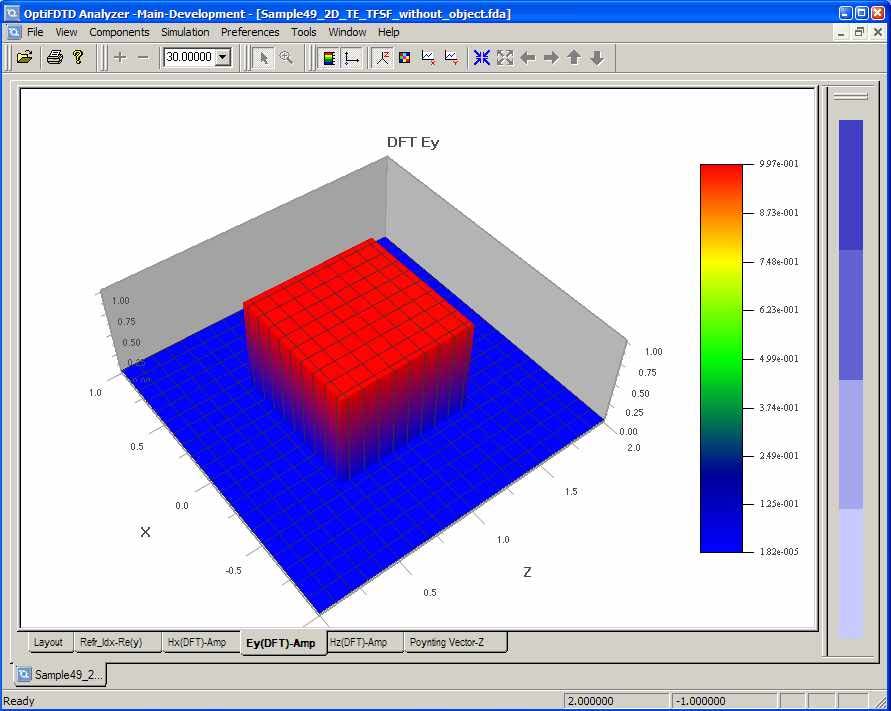| Step | Action |
| 1 | In the analyzer window, Click Ey(DFT) AMP button under the graph window to observe the steady state response for this TFSF excitation in free space (Figure 15). |
| 2 | Click Hx(DFT) AMP button or Hz(DFT) AMP button to Observe other field components. |
| 3 | In the Components menu, click field components and select phase will bring the phase distribution for each field component. |
Figure 15: Steady state response


